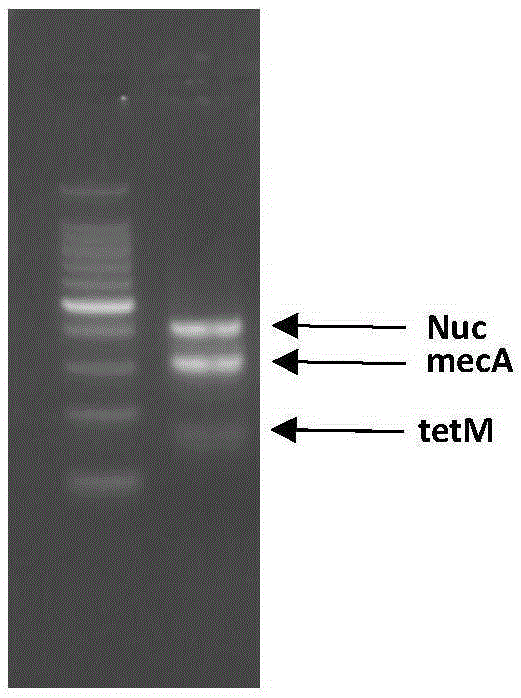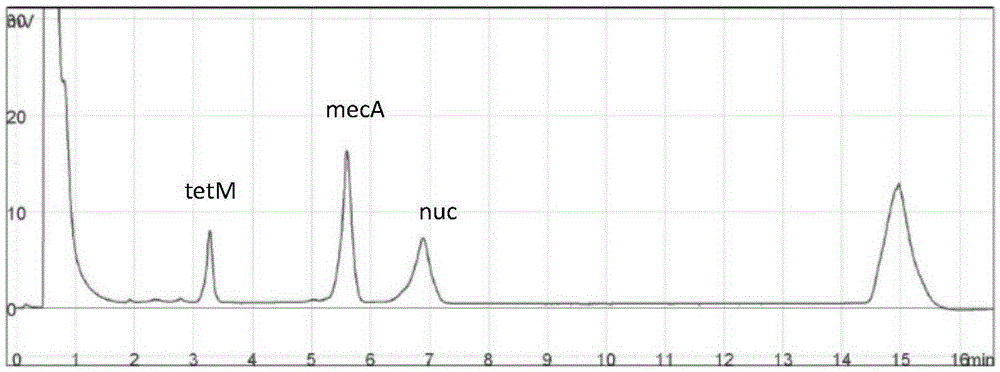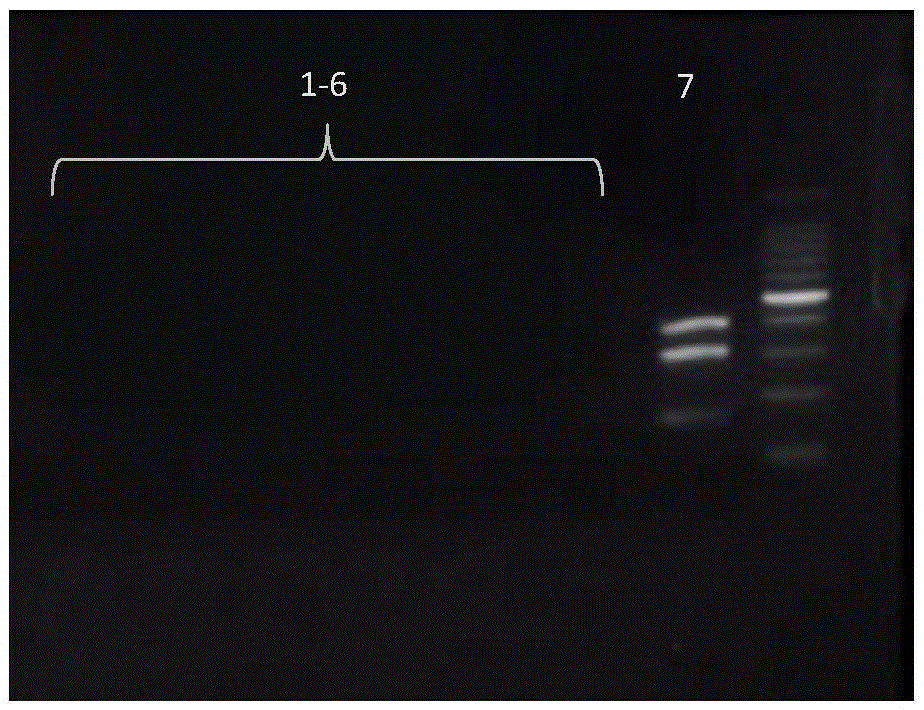Compositions for the detection of methicillin-resistant and/or tetracycline-resistant Staphylococcus aureus
A methicillin-resistant Staphylococcus technology, applied in the field of mPCR detection of methicillin-resistant and/or tetracycline-resistant Staphylococcus aureus drug-resistant genes, can solve the problems of superinfection, increased risk, unreasonable, etc., and achieve operational Simple, short inspection time, saving labor and financial resources
- Summary
- Abstract
- Description
- Claims
- Application Information
AI Technical Summary
Problems solved by technology
Method used
Image
Examples
Embodiment 1
[0068] (1) Primer design, synthesis and kit assembly:
[0069] Primers were designed for the species-specific gene thermostable nucase nuc gene, MRSA resistance determinant mecA gene and tetracycline resistance determinant tetM of Staphylococcus aureus. The present embodiment determines that the primer sequences and amplified fragment lengths used for detection are shown in Table 2:
[0070] Table 2
[0071]
[0072]
[0073] On this basis, a kit for detection is designed. The kit includes TaqDNA polymerase and PCR reaction solution at a concentration of 5U / μL; the PCR reaction solution contains 10mM Tris HCl, 50mMKCl, 25mMMgCl 2 , dNTP (dATP, dGTP, dCTP and dTTP) 2.5 mM each and the above three pairs of primers for Staphylococcus aureus (concentrations are shown in Table 2).
[0074] (2) mPCR:
[0075] Use the multiple primers designed in the above step (1) and the corresponding kit to carry out PCR amplification, including the following steps:
[0076] ①Preparatio...
Embodiment 2
[0104] Embodiment 2. Specificity test
[0105] Genomic DNA was extracted from all the reference strains in Table 1, and then using the genomic DNA as a template, the method established in Example 1 was used for detection and analysis. The results of mPCR-electrophoresis are attached image 3 As shown, among the test strains, only the corresponding bands were detected for Staphylococcus aureus, and the rest of the strains showed negative test results. The detection result of the mPCR-electrophoresis method established in Example 1 has high specificity and no false positive and false negative results.
[0106] The results of mPCR-DHPLC are attached Figure 4 As shown, among the test strains, only Staphylococcus aureus detected the corresponding absorption peak, and the rest of the strains showed negative test results. The PCR-DHPLC detection method established in Example 1 has high specificity and no false positive and false negative results.
Embodiment 3
[0107] Embodiment 3 detection sensitivity test
[0108] Inoculate Staphylococcus aureus ATCC51153 into TSB medium, culture at 36±1°C for 24 hours, and measure the number of bacteria in the enrichment solution by gradient dilution method or counting method to be 5.4×10 6 cfu / ml, and the enrichment solution was carried out 10 times -2 、10 -3 、10 -4 Gradual dilution, the number of bacteria obtained was 5.4×10 5 cfu / ml, 5.4×10 4 cfu / ml, 5.4×10 3 cfu / ml, 5.4×10 2 The cfu / ml bacterial liquid was extracted and analyzed respectively, and the results of mPCR-electrophoresis / DHPLC are attached Figure 5 and 6 As shown, it shows that the nuc gene can be detected as low as 5.4×10 3 cfu / ml.
PUM
 Login to View More
Login to View More Abstract
Description
Claims
Application Information
 Login to View More
Login to View More - R&D
- Intellectual Property
- Life Sciences
- Materials
- Tech Scout
- Unparalleled Data Quality
- Higher Quality Content
- 60% Fewer Hallucinations
Browse by: Latest US Patents, China's latest patents, Technical Efficacy Thesaurus, Application Domain, Technology Topic, Popular Technical Reports.
© 2025 PatSnap. All rights reserved.Legal|Privacy policy|Modern Slavery Act Transparency Statement|Sitemap|About US| Contact US: help@patsnap.com



